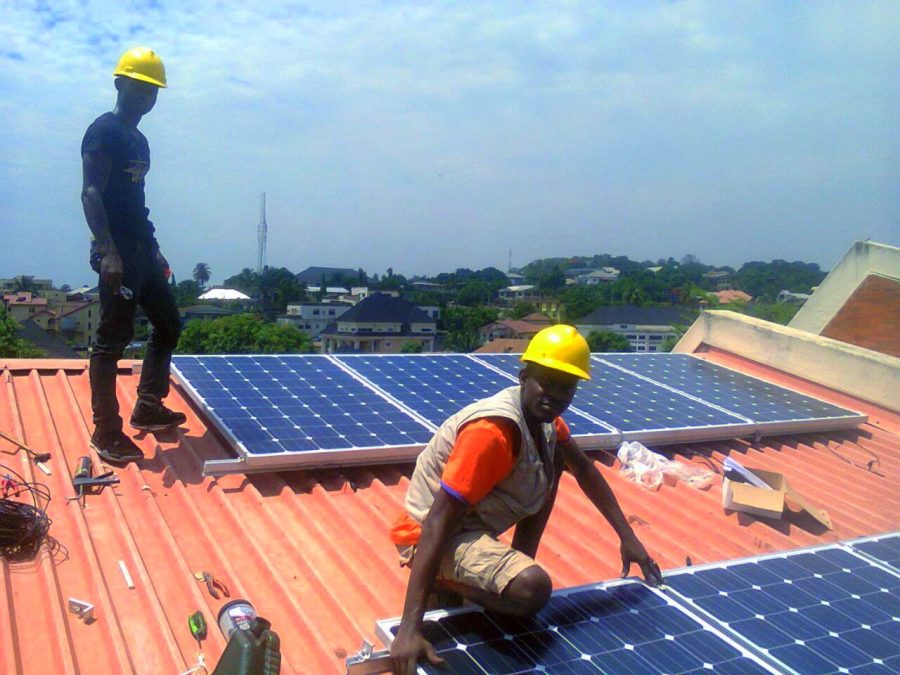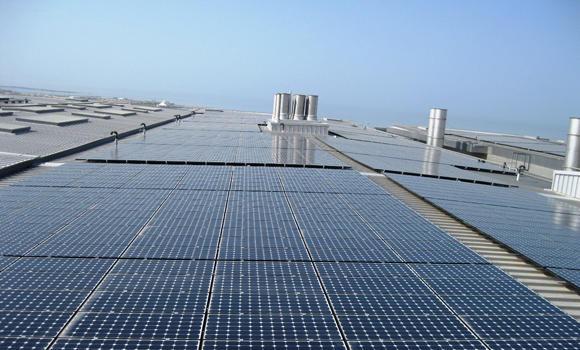Between 2015 and 2021, China is expected to install 40% of all worldwide wind energy and 36% of all solar

While investments in renewable energy slumped last year, a big drop in unsubsidized costs for new wind and solar power installations indicated that they remain popular energy alternatives.
Last year, the average “levelized cost” or total cost of generating power from solar worldwide dropped 17% percent, onshore wind costs dropped 18% and offshore wind turbine power costs fell 28%, according to a new report from the United Nations and Bloomberg New Energy Finance (BNEF).
 Department of Energy
Department of Energy“Well, after the dramatic cost reductions of the past few years, unsubsidized wind and solar can provide the lowest cost new electrical power in an increasing number of countries, even in the developing world — sometimes by a factor of two,” Michael Liebreich, chairman of the Advisory Board at BNEF, said in the report.
The average capital cost for solar power projects of new construction in 2016 was 13% lower than in 2015, while for onshore wind the drop was 11.5% and for offshore wind, 10%.
 UN/BNEF
UN/BNEF“It’s a whole new world: even though investment is down, annual installations are still up; instead of having to subsidize renewables, now authorities may have to subsidize natural gas plants to help them provide grid reliability,” Liebreich said.
Last year, more gigawatts of solar power were added (75GW) than of any other technology for the first time. Trailing behind solar, in order of net gigawatts installed, were wind, coal, gas, large hydroelectric, nuclear and biomass.
Renewable energy accounted for 55% of new worldwide power last year, or a total of 138.5 gigawatts (GW). That compares with 127.5GW of new renewable energy in 2015; and renewable power installed in 2016 was done so at a cost 23% lower than 2015, the report showed.
 UN/BNEF
UN/BNEFSince 2010, the dollars committed per year to new renewable energy worldwide — excluding hydroelectric — have increased roughly five-fold, and have since oscillated between $234 billion and $312 billion, the report said.
“A major reason why installations increased, even though dollars invested fell, was a sharp reduction in capital costs for solar photovoltaics, onshore and offshore wind,” the report said.
At the same time, because of the drop in prices, last year, the overall investment in renewable energy plummeted 23% to $241.6 billion from the record established in 2015; it was the lowest total investment since 2013.
 Target
TargetInvestment in new renewables capacity was roughly double that in fossil fuel generation in 2016, for the fifth successive year. The proportion of global electricity coming from renewable sources rose from 10.3% in 2015 to 11.3% in 2016, and prevented the emission of an estimated 1.7 gigatons of CO2.
Smart energy hardware such as smart meters, energy storage sources and associated IoT technologies also saw record investments last year. Asset finance for smart meters and energy storage, plus equity raised for specialist companies in energy efficiency, storage and electric vehicles, totalled a record $41.6 billion last year. That was up 29%.
In the U.S., utilities and private energy companies are increasingly investing in smart grid technology, including microgrids.
 Duke Energy/Schneider Electric
Duke Energy/Schneider ElectricChina now leads the world in renewable investments
China is now the world leader in domestic investments in renewable energy. In 2015, it invested $103 billion, a 17% increase in spending year over year — twice as much as the U.S. invested. The country is now actively pursuing a “global” strategy, which aims for a Pan-Asian development approach.
In 2016, China increased its foreign investments in renewable energy by 60% year over year to $32 billion, according to a January report from the Institute for Energy Economics and Financial Analysis (IEEFA).
 UN/BNEF
UN/BNEFChina will install 36% of all global hydro electricity generation capacity from 2015-2021, according to the report. During the same period, it will install 40% of all worldwide wind energy and 36% of all solar, the IEEFA said.
“A change in leadership in the U.S. is likely to widen China’s global leadership in industries of the future, building China’s dominance in these sectors in terms of technology, investment, manufacturing and employment,”

